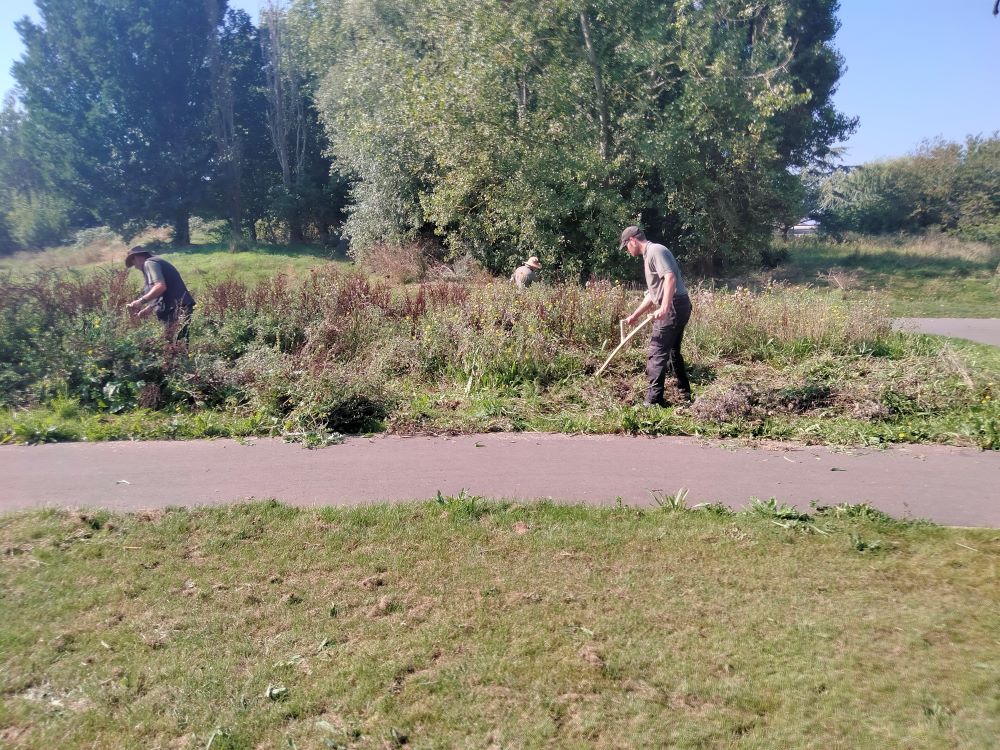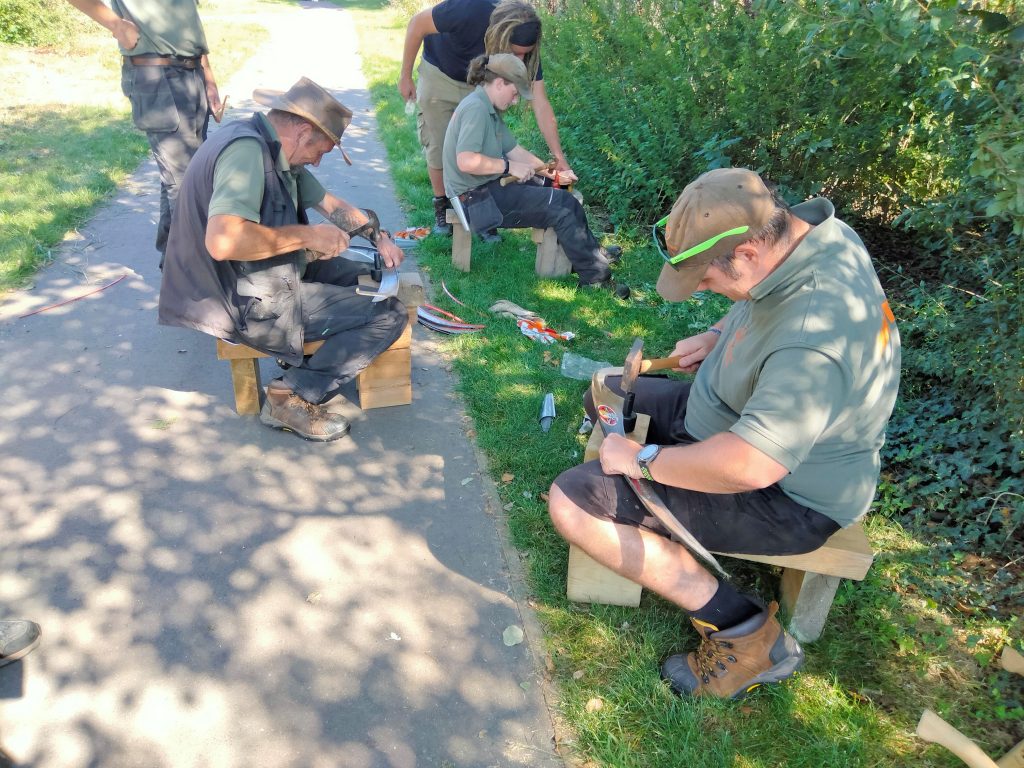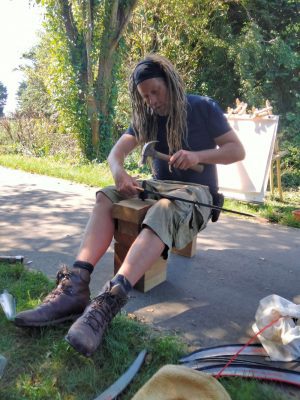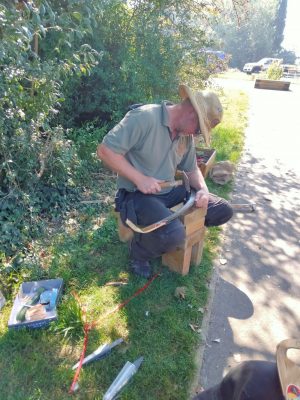The heritage art of scything dates back hundreds of years and is still a viable and sustainable method of land management today. With the move towards using less fossil fuel it offers a carbon neutral way to manage a habitat which is better for the environment and the wildlife within it.

It is possible to cut various areas such as longer grasses, wildflower meadows, waterside vegetation, orchards and private gardens. Without the need for power tools such as strimmers or mowers. Unlike power tools, there is very little maintenance required and it should last a lifetime, so it’s a good choice in the long term to save money.

Scythes can be used to create islands of wild flowers and longer grasses in rotation, which offers havens for pollinators and other wildlife. It is possible to cut up to three times a year in a mosaic pattern in order to stop some plants becoming too dominant or to allow wildflowers to be able to come though. One can work from the middle of an area outwards in order to allow living creatures in the cutting area the chance to escape. This mimics the use of grazing to maintain scrub areas where animals cannot be used.


A huge benefit of scything is the health and wellbeing of the scythe user versus the use of power tools. It is a great way to build up fitness and used correctly will not put any strain on the body. It is a wonderful and peaceful way to be part of the habitat that you are cutting without loud machinery and PPE including headphones and masks. This makes scything an ideal way for private garden owners, volunteers and green space groups to manage their areas independently.
On Thursday 7th September Stephan Gehrels from the Brighton Permaculture Trust came and delivered a Scythe training day to the Adur and Worthing Council Ranger team.

This was a ground-breaking day as it was the first council ranger team to take on this challenge and consider the use of scythes when possible in their work. It was a fantastic training day that I also attended as the Adur and Worthing Wildflower Trail Projects volunteer (link below)
During the day we learned how to use the scythe in various habitats as well as the method of cold forging known as ‘Peening’ in order to maintain and sharpen the scythe blade.


We came away fully able to use the tools safely. The lighter Austrian Scythes are available to buy from the BPT with the whole starter kit if keen to carry on scything. It is hoped that this sustainable training can be rolled out into the wider Community and further Scythe days can be organised via the Brighton Permaculture trust when the cutting season comes round again. (link below)
Brighton Permaculture Trust – Scything Workshop

For more information about scythe training or to express any interest in the use of Scythes, or our Wildflower Trail project, contact Debs Nicolls on the email below.
